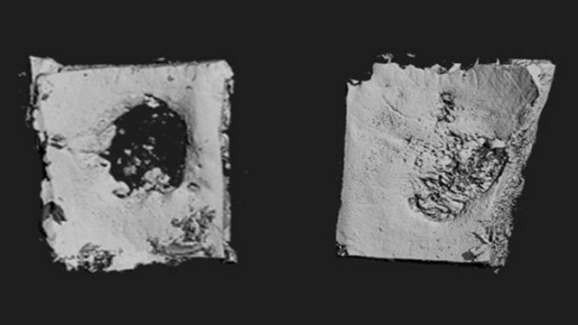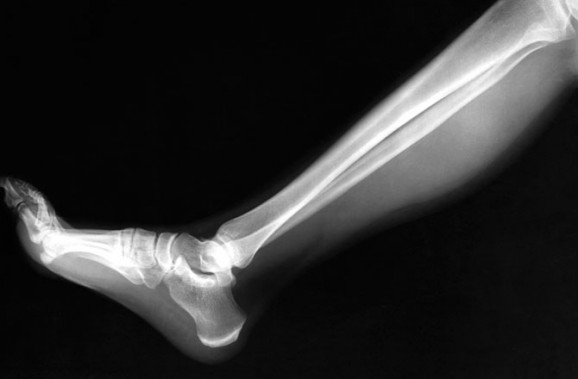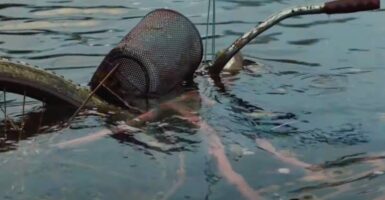A Bio-Engineered Patch That Stimulates Bone Growth Inside The Body
This article is more than 2 years old
 Patches aren’t just what we put over the holes in our jeans, or what software companies release in an attempt to correct program glitches. Patches now also pertain to material humans can put inside their bodies to help fix what’s gone wrong.
Patches aren’t just what we put over the holes in our jeans, or what software companies release in an attempt to correct program glitches. Patches now also pertain to material humans can put inside their bodies to help fix what’s gone wrong.
University of Iowa researchers conducted a study to test something called a “bio patch” designed to help regrow damaged or missing bones. The patch works by sending nano-particles full of DNA, which is full of bone-growing instructions, straight into the body’s cells. These instructions help existing cells produce proteins necessary for bone production.

The strategy of sending DNA to the cells that enables the cells to produce the protein necessary to stimulate bone regeneration is a change from the previous method of trying to stimulate growth from the outside, namely in the form of injections, which is more expensive, difficult, and unpredictable. This way, the “doses” become a sustained delivery over a long period of time.
The research team found that the technique works so successfully that they’re able to make a bone scaffold in the shape and size necessary to match the holes or gaps. In this experiment, the teams used a collagen scaffold for the base of the patch, which they then loaded with synthetic plasmids containing the bone-producing genetic instructions. They then implanted the scaffold onto a small hole in the skull of a test animal. In a four-week test, scientists founded that the bio patch grew 44 times more bone and soft tissue than in test subjects that received just the collagen scaffold alone. This is because cells that migrate onto the implanted scaffold come into contact with the plasmid, which they integrate into their functioning to receive the encoding necessary to produce the proteins for bone growth.
In fact, the bio patch successfully regrew bone to the extent that it covered test animals’ skull wounds. In human subjects, the patch has produced new growth in bone marrow cells. Scientists believe that such a patch could be used to grow bones in infants whose skulls or facial bones haven’t fully grown or fused. It could also be used to grow bone in the jaw or mouth for use in dental procedures, particularly implants.
Another upside to the new method is that it’s nonviral, which means it’s less likely to trigger a negative immune response and is easier and cheaper to produce. The team is now at work creating a similar bio patch that could catalyze the growth of new blood vessels.












